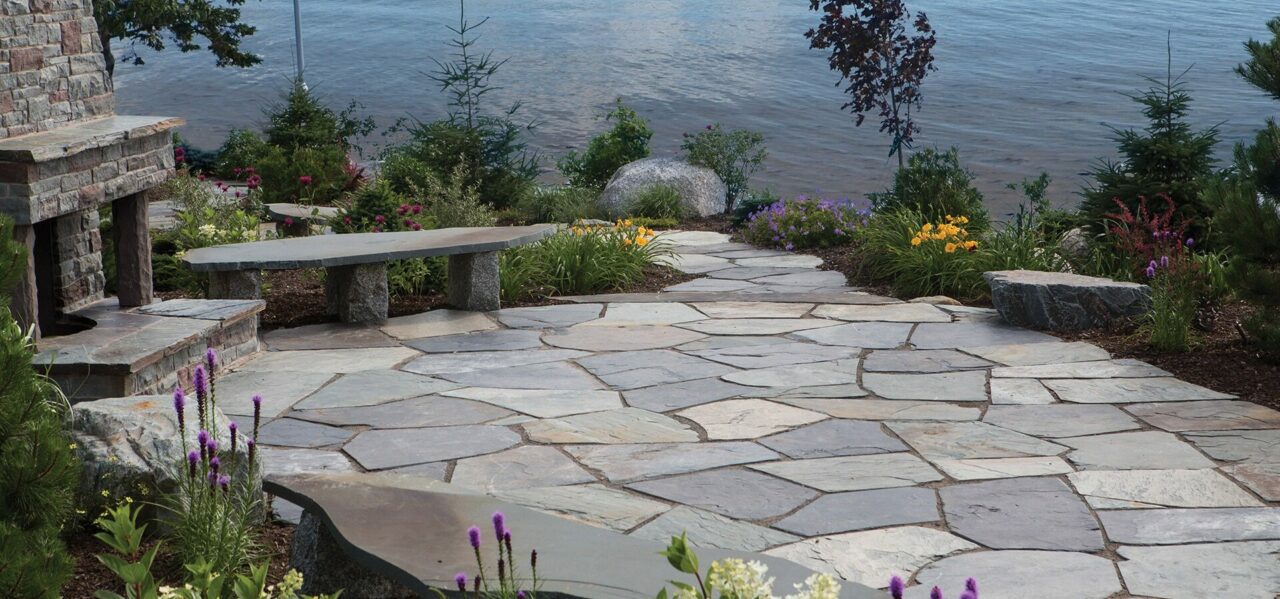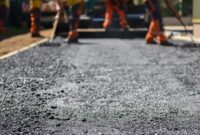Cleaning paving stones is an essential task for homeowners and property managers to maintain the beauty and longevity of outdoor spaces. Paving stones, such as bricks or concrete pavers, can accumulate dirt, stains, and even algae growth over time, diminishing their aesthetic appeal and creating potential safety hazards. Learning how to clean paving stones effectively is a valuable skill that not only enhances the appearance of your outdoor areas but also prolongs the life of these hard surfaces.
In this guide, we will walk you through the step-by-step process of cleaning paving stones, from gathering the necessary materials to executing each stage of the cleaning procedure. Whether you’re looking to refresh your patio, driveway, or garden paths, this comprehensive guide will help you achieve a clean, attractive, and well-maintained result that you can enjoy for years to come.

Materials you’ll need (Clean Paving Stones):
- Broom: A stiff-bristle broom will help you remove loose debris and dirt from the surface of the paving stones.
- Garden Hose or Pressure Washer: You can choose between a garden hose with a spray nozzle or a pressure washer for rinsing and cleaning the stones. A pressure washer is more powerful but not always necessary.
- Bucket: You’ll need a bucket for mixing your cleaning solution and for carrying water if needed.
- Cleaning Solution: Several options are available:
- Mild Detergent: Use a mild dishwashing detergent mixed with water. Typically, a few tablespoons of detergent in a bucket of water will suffice.
- Vinegar: White vinegar (undiluted) can be used for removing algae and mildew. You can apply it directly to affected areas.
- Commercial Paving Stone Cleaner: You can purchase a cleaner specifically designed for paving stones. Always follow the manufacturer’s instructions for these products.
- Baking Soda: Make a paste by mixing baking soda with water for tougher stains. This can be applied directly to the stained areas.
- Stiff Bristle Brush: A stiff brush will be handy for scrubbing away stubborn stains or algae growth. Ensure it has strong bristles to effectively remove dirt and stains without damaging the stones.
- Protective Gear: Consider wearing protective gear such as gloves and eye protection, especially if you’re working with chemical cleaners. This is important for your safety.
By gathering these materials, you’ll be well-prepared to clean your paving stones effectively and maintain their appearance.
Read also:
- How to Lay Patio Pavers on Dirt : Easy DIY Project at Home
- How to Lay Paving Slabs on a Slope – Easy Step by Step
- Backyard Ideas Without Fence | Home & Garden
Cleaning Process:
- Clear the Area: Before you begin, clear the area of any obstacles, including furniture, potted plants, or other items. This will give you unrestricted access to the paving stones.
- Sweep: Start by sweeping the entire surface of the paving stones with a stiff-bristle broom. The purpose of this step is to remove loose dirt, leaves, and debris from the surface. It’s essential to begin with a clean slate for more effective cleaning.
- Pre-Rinse: Using either a garden hose with a spray nozzle or a pressure washer, give the entire surface a preliminary rinse. This helps remove a significant portion of surface dirt and debris, making the subsequent cleaning process more efficient. Begin at one end and work your way to the other to prevent stepping on wet, cleaned areas.
- Apply Cleaning Solution:
- If you’re using a mild detergent, mix it with water as directed by the manufacturer’s instructions or in a 1:10 ratio (1 part detergent to 10 parts water). The soapy solution helps break down dirt and stains.
- If you have algae or mildew growth, apply undiluted white vinegar directly to the affected areas. Vinegar is effective at killing algae and mold.
- If you’re using a commercial paving stone cleaner, follow the manufacturer’s instructions for mixing and application.
- For tougher stains, like oil or grease, make a paste by mixing baking soda with a small amount of water. Apply the paste directly to the stained areas and let it sit for a few minutes. Baking soda helps to absorb and lift stains.
- Scrub: Use a stiff bristle brush to scrub the paving stones, paying extra attention to stained or soiled areas. Apply some pressure, but be cautious not to scratch the surface. The scrubbing action, combined with the cleaning solution, helps break down and remove dirt, stains, and algae. For larger areas, consider using a long-handled brush to minimize bending.
- Rinse: After scrubbing, thoroughly rinse the paving stones with your garden hose or pressure washer. Begin at one end and systematically work your way to the other end. Ensure that all cleaning solution and dirt are washed away. A good rinse leaves your paving stones looking clean and fresh.
- Repeat if Necessary: If stubborn stains or algae remain, you may need to repeat the cleaning process. Some stains may require multiple cleaning sessions to be completely removed.
- Sealing (Optional): After the paving stones have thoroughly dried, you may consider applying a paving stone sealer. This step is optional but can help protect the surface and make future cleaning easier. Follow the manufacturer’s instructions for the specific sealer you choose.
- Preventative Maintenance: To maintain the cleanliness of your paving stones, regularly sweep the surface to prevent the accumulation of debris. Additionally, consider using weed barriers or applying weed-killing solutions between the stones to prevent weed growth in the future.
By following these steps, you can effectively clean your paving stones and keep them looking their best. Regular maintenance will help extend the lifespan of your paved area and reduce the need for intensive cleaning.
Read more:
- Low Maintenance Modern Backyard Ideas – Home & Garden
- 53 Dream Backyard Inspiration | Home & Garden Ideas
- 42 Stunning Front Yard Fence Ideas | Blending Nature and Structure
Conclusion
In conclusion, maintaining the cleanliness and beauty of your paving stones is essential to ensure that your outdoor areas remain inviting and safe. Regular cleaning and proper upkeep not only enhance the aesthetics of your patios, driveways, and garden paths but also extend the lifespan of these surfaces.
By following the steps outlined in this guide, you can confidently tackle the task of cleaning your paving stones, from sweeping away debris to applying effective cleaning solutions and, if necessary, sealing the surfaces. With dedication and attention to detail, your paving stones will remain a source of pride, providing you with an attractive and functional outdoor space for years to come. So, roll up your sleeves and get ready to transform your outdoor areas into clean, vibrant, and well-maintained spaces for relaxation and enjoyment.
Frequently Asked Questions (FAQs)
Q1: How often should I clean my paving stones? A1: The frequency of cleaning your paving stones depends on factors like your local climate and foot traffic. In general, it’s a good practice to clean them at least once a year. However, areas with more significant debris or moisture may require more frequent cleaning.
Q2: Can I use a pressure washer to clean my paving stones? A2: Yes, you can use a pressure washer to clean paving stones, but it’s essential to be cautious. Use the lowest pressure setting to avoid damaging the stones or forcing sand from the joints. Test a small, inconspicuous area first and maintain a consistent distance from the surface. Always follow the manufacturer’s guidelines for your pressure washer.
Q3: What’s the best way to remove stubborn stains from paving stones? A3: Stubborn stains like oil or grease can be challenging to remove. Try making a paste with baking soda and water, apply it to the stain, and let it sit for a while before scrubbing. You may need to repeat this process. For rust stains, consider using a commercial rust remover designed for outdoor surfaces.
Q4: Should I seal my paving stones after cleaning them? A4: Sealing your paving stones is optional but highly recommended. Sealer helps protect the surface from stains, moisture, and UV damage. It also makes future cleaning easier. Follow the manufacturer’s instructions for the specific sealer you choose, and reapply it as needed, typically every 2-5 years.
Q5: How can I prevent weeds from growing between my paving stones? A5: To prevent weed growth, you can use weed barriers or apply a weed-killing solution between the stones. Properly installed joint sand can also help inhibit weed growth. Regularly inspect and maintain the joints, replacing sand as needed.
Q6: Can I use bleach to clean my paving stones? A6: It’s generally not recommended to use bleach on paving stones, as it can harm the surface and damage nearby plants. Instead, opt for milder cleaning solutions like a diluted mild detergent, vinegar, or a commercial paver cleaner, which are more stone-friendly.
Q7: What safety precautions should I take while cleaning paving stones? A7: When cleaning, wear gloves and eye protection, especially if you’re working with chemicals. Ensure the area is well-ventilated. Be cautious when using a pressure washer to avoid injury or damaging the stones. Follow safety guidelines and instructions for any cleaning products you use.






